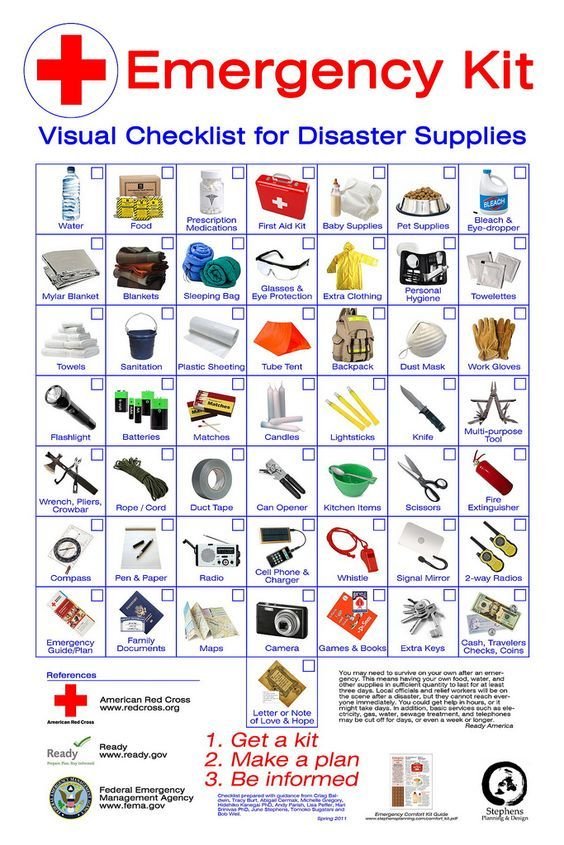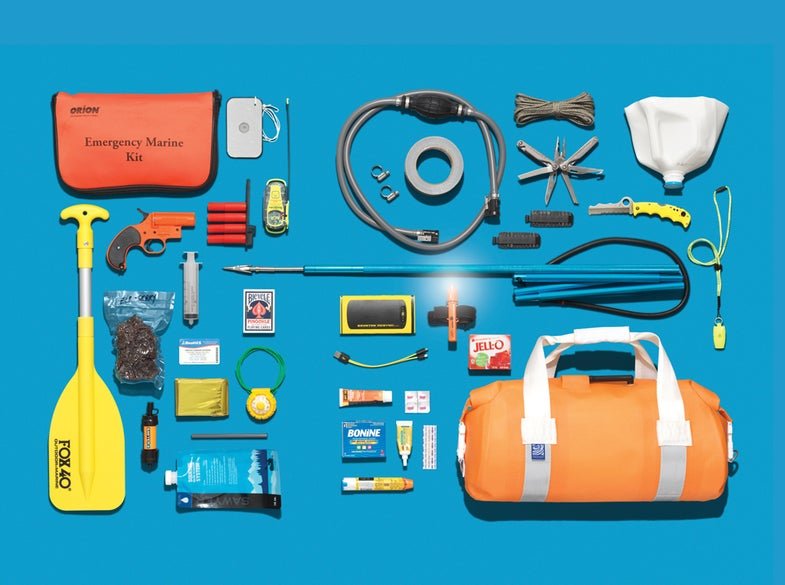Are you someone who loves outdoor adventures or just wants to be prepared for any emergency situation? If so, you may be wondering what items you should include in a basic survival kit. Well, look no further! In this article, we will discuss the essential items that should be included in a basic survival kit, ensuring that you’re ready for anything that comes your way.
Curious to know what these items are? Well, you’re in luck! In the next section, we will dive into the details of each item and why it is crucial for your survival kit. From water and food rations to a first aid kit and communication tools, we will cover everything you need to know to ensure you’re well-equipped for any unexpected circumstances. So, keep reading to discover the must-have items for your basic survival kit and be prepared for any situation that may come your way!
Water and Food
Water
When it comes to survival, water is the most essential item you need to have in your basic survival kit. Your body can only survive for a few days without water, so it’s important to have a sufficient supply. You should aim to have at least one gallon of water per person per day. This will cover your drinking and sanitation needs. Make sure to regularly check and replace your water supply to ensure its freshness.
Non-perishable food
Alongside water, it’s crucial to have non-perishable food in your survival kit. These are items that have a long shelf life and require no refrigeration. Canned goods, dried fruits, granola bars, and energy bars are all great options. Aim for foods that are high in calories and provide a good balance of carbohydrates, protein, and fats. It’s recommended to have at least a 3-day supply of food in your survival kit.
Water purification tablets
In case you run out of clean water or need to collect water from natural sources, water purification tablets are a must-have item in your survival kit. These tablets are designed to kill bacteria, viruses, and parasites, making water safe to drink. They are lightweight and easy to carry, making them a convenient choice for survival situations. Remember to carefully follow the instructions on the packaging when using water purification tablets.
Shelter and Warmth
Emergency blanket
When faced with extreme weather conditions or unexpected exposure, an emergency blanket can be a lifesaver. These compact and lightweight blankets are designed to retain body heat and protect against hypothermia. Made of Mylar material, they are highly reflective and can help signal for help if necessary. Keep an emergency blanket in your survival kit to provide warmth and protection from the elements.
Tarp or tent
Having a reliable shelter is essential for survival, especially during harsh weather conditions. A tarp or tent can provide you with shelter, keeping you safe from rain, wind, and other elements. Look for a lightweight and compact option that can easily fit into your survival kit. It’s also helpful to have some basic knowledge of how to set up a tarp or tent to ensure quick and efficient shelter construction.
Firestarter
Fire is not only a source of warmth, but it also provides a means to cook food and purify water. Including a firestarter in your basic survival kit is essential. Options such as waterproof matches, lighters, or fire starter rods can all be effective. It’s recommended to include multiple fire-starting options in case one fails or becomes damaged. Additionally, learning basic fire-starting techniques and practicing them beforehand can greatly increase your chances of success.

This image is property of www.fieldandstream.com.
First Aid
Bandages
In any emergency situation, injuries can occur. Having a basic first aid kit in your survival kit is crucial. This should include a variety of bandages, such as adhesive bandages, gauze pads, and adhesive tape, to treat wounds and control bleeding. It’s important to regularly check and replace any expired or used items in your first aid kit to ensure its effectiveness when needed.
Antiseptic wipes
Cleanliness and preventing infection are essential in a survival situation. Antiseptic wipes can be used to clean wounds, sterilize surfaces, and maintain overall hygiene. These wipes are easy to use and typically come individually packaged, making them convenient for storage in your survival kit. Regularly sanitize your hands and any equipment or surfaces to prevent illness and maintain good hygiene.
Pain relievers
In a survival situation, pain relief can be crucial for your comfort and well-being. Including pain relievers, such as acetaminophen or ibuprofen, in your basic survival kit can help alleviate headaches, muscle aches, and other minor pains. Remember to follow the instructions and recommended dosages when using pain relievers.
Navigation and Communication
Compass
Having a reliable method of navigation is vital in a survival situation where you may need to find your way back to safety or seek help. A compass is a simple and effective tool that can help you determine direction and orient yourself in unfamiliar territory. Learn how to use a compass properly and keep it in your survival kit along with a map of your local area.
Whistle
A whistle is a compact and lightweight tool that can be used to attract attention and signal for help. In a survival situation, your voice may become strained or be drowned out by surrounding noise. A whistle allows you to produce a loud and distinct sound that can carry over long distances. Attach a whistle to your survival kit or wear it around your neck for easy access.
Signal mirror
A signal mirror can be a valuable tool for long-range communication in a survival situation. It allows you to reflect sunlight towards a potential rescuer or passing aircraft, increasing your chances of being spotted. Signal mirrors are lightweight and compact, making them an excellent addition to your survival kit. Practice using a signal mirror beforehand to ensure you know how to effectively use it when needed.

This image is property of www.moreprepared.com.
Lighting
Flashlight
Having a reliable source of light is crucial in a survival situation, especially during the nighttime or in dark environments. A flashlight is an essential item to include in your survival kit. Look for one that is durable, waterproof, and uses energy-efficient LED bulbs. Additionally, make sure to include extra batteries or choose a flashlight that is rechargeable.
Headlamp
A headlamp is another great lighting option as it allows for hands-free use. It provides a focused beam of light, allowing you to navigate and perform tasks easily in low-light conditions. Look for a lightweight and adjustable headlamp that won’t strain your neck or head during extended use. Including extra batteries or a rechargeable option is also important.
Extra batteries
In addition to your flashlight and headlamp, it’s crucial to have extra batteries in your survival kit. Batteries can power various essential items, including communication devices, GPS devices, and other electronics. Keep a variety of battery sizes to ensure compatibility with your different tools and equipment. Regularly check and replace batteries to ensure they are fresh and fully charged when needed.
Tools and Equipment
Multi-tool
A multi-tool is a versatile and compact tool that combines various functions into one convenient device. It typically includes features such as pliers, knives, screwdrivers, and wire cutters. Having a multi-tool in your survival kit provides you with essential tools for various tasks and repairs. Look for a durable and high-quality multi-tool that can withstand the demands of a survival situation.
Duct tape
Duct tape is a versatile and reliable tool that has a wide range of uses in survival situations. It can be used for repairing gear, constructing shelters, creating splints, and much more. Keep a roll of duct tape in your survival kit as it is lightweight and takes up minimal space. Its strong adhesive properties and durability make it an essential item to have on hand.
Paracord
Paracord, also known as parachute cord, is a strong and lightweight cord that can be used for various purposes in a survival situation. It is incredibly versatile and can be used for activities such as building shelters, securing gear, creating snares, and making emergency repairs. Consider including a length of paracord in your survival kit as it is compact and easy to carry.

This image is property of i0.wp.com.
Personal Protection
Knife
A sturdy and reliable knife is an essential tool in any survival kit. It can be used for a wide range of tasks, including preparing food, building shelters, and self-defense if necessary. Choose a knife that has a fixed blade, as it is generally more durable and reliable than a folding knife. Keep your knife in a sheath or protective case to prevent accidents and ensure easy access.
Pepper spray
In situations where personal safety is threatened, having a means to defend yourself can be crucial. Pepper spray is a non-lethal self-defense tool that can temporarily incapacitate an attacker, allowing you to escape and seek help. Include a small canister of pepper spray in your survival kit and familiarize yourself with how to use it properly and effectively.
Face mask
In emergency situations, air quality can quickly deteriorate, especially in areas with smoke, dust, or pollutants. A face mask can protect you from harmful particles, allergens, and airborne contaminants. Include a high-quality face mask in your survival kit to ensure your respiratory health and protection in various environments.
Hunting and Fishing
Fishing line and hooks
In a prolonged survival situation, a renewable food source can be critical for your long-term survival. Including fishing line and hooks in your basic survival kit allows you to try your hand at fishing for sustenance. Compact and lightweight fishing kits are available and include various hook sizes, fishing line, and other essential fishing accessories.
Snare wire
Snare wire is a valuable tool for trapping small game in a survival situation. It allows you to create simple traps to catch animals for food. Include a coil of snare wire in your survival kit, along with some basic knowledge of trapping and snare placement.
Slingshot
A slingshot can be an effective tool for hunting small game or providing self-defense in a survival situation. It is lightweight, easy to use, and does not require ammunition. Consider including a slingshot in your basic survival kit, along with some practice to improve accuracy and proficiency.

This image is property of npr.brightspotcdn.com.
Sanitation and Hygiene
Toilet paper
Maintaining proper sanitation and hygiene is crucial for your health and well-being in a survival situation. Including toilet paper in your basic survival kit helps ensure cleanliness and proper waste disposal. Choose compact and biodegradable options that are easy to store and carry.
Hand sanitizer
In situations where clean water and soap are not readily available, hand sanitizer can be a valuable alternative for maintaining proper hand hygiene. Include a small bottle of hand sanitizer in your survival kit and use it regularly to reduce the risk of infection and illness.
Trash bags
Trash bags have multiple uses in a survival situation. They can be used to store and carry items, create makeshift shelters, collect and dispose of waste, and even gather rainwater. Choose durable trash bags that can withstand heavy loads and can be easily secured. Include a few trash bags in your survival kit for their versatility and practicality.
Conclusion
In conclusion, a basic survival kit should contain items that cover the essential aspects of survival – water and food, shelter and warmth, first aid, navigation and communication, lighting, tools and equipment, personal protection, hunting and fishing, and sanitation and hygiene. By having these items readily available in a compact and portable kit, you are better prepared to handle unexpected emergencies and increase your chances of survival. Remember to regularly check and replace any expired or used items to ensure the effectiveness of your survival kit. Stay safe and be prepared.

This image is property of www.fieldandstream.com.
